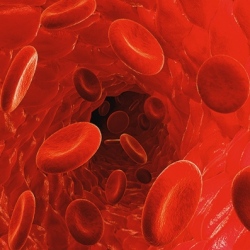
Researchers have developed a rapid new technique for making small-scale artificial human arteries for use in a system for testing drugs. That means promising drugs could be better tested before entering human trials. The new technique produces the artificial arteries ten times faster than current methods and the arteries are functional.
The researchers successfully engineered artificial arteries containing the lining (endothelium) and muscle (media) layers of arteries. They also showed that both layers could communicate and function normally.
“We wanted to focus on arteries because that’s where most of the damage is caused in coronary diseases,” said George Truskey, senior author, Professor of Biomedical Engineering and Dean of the Pratt School of Engineering at Duke University.
Graduate student Cristina Fernandez developed the technique to create arteries; but instead of full-size arteries, they were scaled down to one-tenth the size of a typical human artery. With this smaller diameter, the researchers were able to make a lot of these artificial vessels in a short amount of time and use them in experiments in just a few hours, instead of spending several weeks developing each one.
Despite the smaller size, these engineered arteries behaved normally, with statin drugs blocking inflammation just as they do in patients. The endothelial cells also released chemical signals to relax and constrict the media layer, again just like they do in the normal human body.
“Many of the [previous] techniques for creating artificial tissue also were rather lengthy, which was frustrating,” said Truskey. The previous studies also focused on the media cells rather than the endothelial cells, and “nobody had shown how the two would interact,” he added.
“While our arteries are small and intended for testing, they’re just as mechanically strong as those intended to be put inside of the body,” said Truskey. “So the technique could be beneficial to researchers trying to create artificial arteries to replace damaged ones in patients as well.” The arteries could also be used to look at how some select rare genetic diseases affect arteries, he added.
